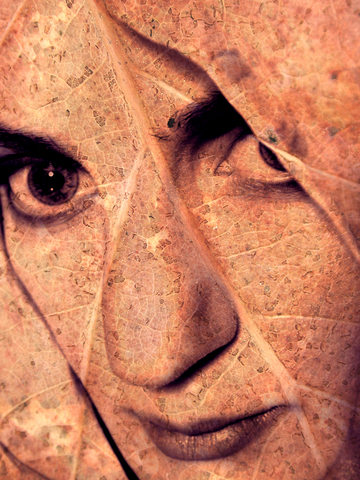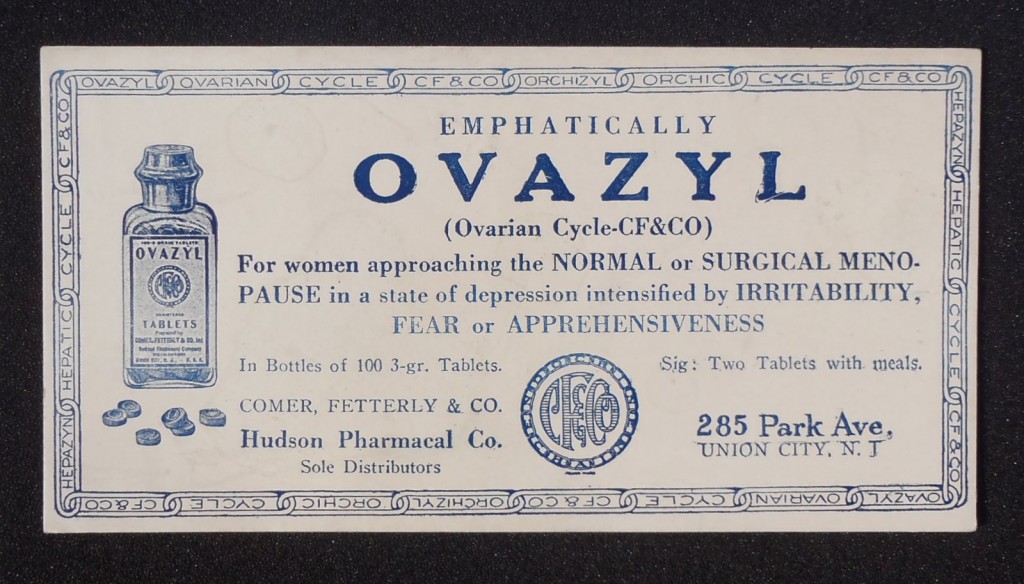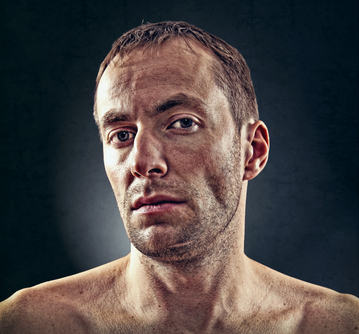Newsflash! When it comes to symptoms ‘down there,’ does terminology matter?
GSM (genitourinary symptoms of menopause) is a new acronym being adopted by the North American Menopause Society (NAMS) and the International Society for the Study of Women’s Sexual Health (ISSWSH) to encourage dialogue between female patients and their doctors. NAMS says that it refers to the genital, sexual and urinary problems that make women and their doctors uncomfortable discussing. “Having a term that doesn’t carry stigma, isn’t embarrassing to say, and is medically accurate could go a long way in helping women get the help they need and allowing them to make smarter healthcare decisions.”
The vagina and surrounding area (e.g. urethra, lower end of the bladder) are estrogen and androgen receptor-rich. Hence, the decline in estrogen and other sex hormones during menopause can lead to thinning of tissue, loss of elasticity, dryness and physical changes that increase the risk for infection and discomfort. The issue with current nomenclature is that terms that have traditionally referred to genital problems that occur after menopause aren’t accurate; for example, atrophic vaginitis refers to inflammation and infection, both of which may not be the underlying issue during menopause. Atrophy infers that something is wasting away from disuse, which isn’t always the case; rather, pain and dryness can lower libido significantly. Additionally, previously used terminology pretty much ignores urinary problems like overactive bladder, stress incontinence and recurring urinary tract infections.
Yet, there is another part of this story; the stigma attached to the terms used to describe the issues. I’m not sure that I agree with the organizations’ claim that women are too embarrassed to use the term ‘vagina’ with their physicians; after all, when you are sitting in stirrups and the gynecologist is peering into your vagina and you have a question, do you refer to your privates as ‘vajayjay’ or ‘nether region?’ Perhaps prior generations have trouble using the ‘V’ word but as a child of the 60s and 70s (Our Bodies, Ourselves, anyone?!), I would hope that we would have gotten past the embarrassment by the time we reach menopause.
In a related press release, Dr. Margaret Gass, Executive Director of NAMS is quoted as saying that “GSM will make discussing the problems so much easier, similar to the way ED changed our ability to talk about impotence.”
I question the value in further stigmatizing an inherent and necessary part of the female anatomy. Are we still so archaic that in the 21st Century we need an acronym to avoid discussing sensitive issues?
From where I stand, the greatest benefit from this initiative will be to help women understand why these problems happen, that hormones are at-play. The organizations are also developing a tool to standardize aspects of a physical exam to look specifically for the types of changes that cause these issues in menopause. Those two things are wonderful. But do we need truly need another acronym, one that may actually prevent what I hope will be an evolution in thought and communication and the end to an arbitrary code of ethics?
Read MoreGuyside: Your Skin
Bob is out today so I’m taking over Guyside this week. And what better than continue the topic that I started on Monday about skincare. Only this time, it’s the guys that I am most worried about. Did you know that not only has the bulk of research conducted on UV exposure and sun protection been conducted in women, but the few that have looked at men have discovered a rather troubling fact:
Guys are far less concerned about visible aging than women, in part due to different cultural pressures to retain a youthful look. But more importantly, when they skip the sunscreen, they do so because they actually like the effects of UV exposure on their skin. And, I am not referring to the glow of a tan but the ‘ruggedness’ of weathered skin.
When you go for rugged and weathered you may also be signing up for non-melanoma skin cancer (aka squamous cell), which men develop significantly more often than women. The reasons go beyond the lack of use of skin protection and cultural mores; laboratory studies in mice suggest that there are gender differences in how male and female skin reacts to UV light, and theoretically, men may produce less catalase, an enzyme that protects cells from damage.
It’s only squamous cell, right?! Well, hold on, because while it is not usually malignant, it can spread and cause serious complications when it gets into the lymph nodes. In some men, it’s a downright death sentence.
Getting back to the issue at hand: what does it take to get men to pay attention?
I’m not a man so I can only speak for the research. And in the scant research that has been conducted on this topic in men, the answer is pretty simple:
shock and awe.
In fact, when researchers gathered a small group of men between the ages of 18 and 34 and exposed them to a computer program that demonstrated their personal aging process based on UV and non-UV exposure, the guys who were immediately shocked by what they saw were the ones who indicated that the experience would affect their current use of sun protection agents and sun exposure behaviors. And among the ten guys who didn’t care? They tended to raise the positives about the way they appeared in the images.
“I think that I look quite tough…experienced…and weathered.” One man noted that he would have to be persuaded about the risk to his health.
It appears that on average, men engage in riskier sun exposure behaviors than women. Slapping on sunscreen is seen as feminine and some men are simply unfazed by facial aging, noting that wrinkles add character and rugged good looks.
But here’s the rub: after the rugged good looks phase come issues that are difficult to deal with. My dad, for example, grew up on a beach in the 30s and 40s. He’s spent his life having patches of skin removed and once handsome, he is simply an example of skin gone wrong.
Bottom line: sunscreen – wear it. And rugged good looks? All I can say is that some of you may remember the Marlboro Man. Four of these men died as a result of their behavior, in this case, smoking. But more importantly, statistics show that more than half of men don’t use sunscreen and about 71% don’t know squat about cancer warning signs.
Rugged good looks fade. Skin cancer doesn’t.
Read MoreGot skin in the game of life? You best take care of it!
 When it comes to health, many of us neglect our skin. But think about it: its protection allows us to function and when it is well cared for and it allows our inner beauty to shine through. And yet, few of us think beyond the obvious appearance issues to the fact that the effects of aging on skin can lead to certain dermatological conditions that cause illness and even death. Researchers say that in the U.S., a majority of people over the age of 65 have at least one skin disorder; in the UK, 70% of older people experience skin conditions, many of which are preventable.
When it comes to health, many of us neglect our skin. But think about it: its protection allows us to function and when it is well cared for and it allows our inner beauty to shine through. And yet, few of us think beyond the obvious appearance issues to the fact that the effects of aging on skin can lead to certain dermatological conditions that cause illness and even death. Researchers say that in the U.S., a majority of people over the age of 65 have at least one skin disorder; in the UK, 70% of older people experience skin conditions, many of which are preventable.
Guess what? I’m not simply talking skin cancer. Rather, I’m referring to dry skin, inflammatory eczema on the lower extremities, pressure ulcers (when an area of the skin breaks down due to pressure placed on it) tears, wounds itching and an increased bacterial and fungal infections.
The environment: Some of the challenges that we face are directly related to the environment. Factors like air pollution, smoking and of course, regular exposure to UV radiation can lead to deep wrinkles, age spots, and leathery appearance. The message is simple, if not obvious: don’t smoke, wear sunscreen and try to minimize regular exposure to smog infested cities (of course, the latter cannot always be avoided).
Physical factors: A condition known as xerosis cutis i.e. abnormally dry skin, occurs in up to 85% of older adults. It is related to a decline in skin fats and reduced secretion of sebum — the oily, waxy matter that is secreted to keep the skin lubricated and waterproofed. When the skin is abnormally dry, it can increase the inclination to itch and scratch, with in turn, may breakdown the skin and cause wounds and infections. Although there is little that can be done to avoid some of the natural processes of aging, it’s critical to avoid overwashing with soaps and detergents, both of which can remove grease from the skin and lead to scaling and itching. Importantly, air condition and heating. which dry out the air, can exacerbate dry skin and while humidity is uncomfortable, it’s critical. During winter, hydrate the air by running a humidifier. Regular use of emollient-rich creams and moisturizers, like Aveeno or Roc or Nivea can also ward off the time effects of dry skin. Be sure to read the label of popular moisturizers to insure that they contain humectants, which help draw water to the skin.
Another important consideration is the physical integrity of the skin and the way that the skin remodels itself as we age, increasing the predisposition to tears, wounds and pressure ulcers. Unfortunately, science has not caught up with the natural aging process and there isn’t a lot of strong evidence to support one strategy over another. There is indication, however, that knowing your risk before being exposed to situations that might cause pressure ulcers (e.g. bed rest) can help to insure that you take steps before they happen. Avoid rigorous scrubbing of the skin, especially over the bonier areas, as this can increase the risk of later problems. Treat stress incontinence or overactive bladder now, before it regularly exposes the skin to moisture that again, can cause problems down the line. And that eight glasses of water rule? It my actually help your skin in the long run – hydration is key! Avoid too much caffeine and insure that you are eating fruits and veggies with high water contents, like melon, tomatoes and lettuce.
An additional solution may be the use of 0.4% topical retinoids. Research has shown that retinoids can make skin look ‘more youthful, ‘ and may even increase the ability of polysaccharides to retain water in the outer skin layer and promote the production of collagen, which keeps the skin elastic. Additionally, some studies have shown that prolonged use of topical retinoids may improve the skin’s matrix, making it less susceptible to injury and pressure ulcers.
The bottom line is that our skin deserves a lot more attention than we give it and engaging in protective strategies now may result in a payoff later in life. Basic skincare is essential. There is no panacea but taking the appropriate steps will keep your skin the game of life longer.
Read More
Wacky menopausal function?
Try Ovazyl.

Described in the International Record of Medicine and General Practice Clinics (published 1922) as an endocrine functional tonic, Ovazyl was specifically (or “emphatically”) for women entering natural or surgical menopause in a “state of depression intensified by medical and physical irritability, fear or apprehensiveness.”
These nifty pills were developed from raw endocrine glands that were extracted and then dried up under laboratory conditions. Theoretically, two pills daily with meal would address ovarian or thyroid ‘weakness, menstrual disorders, neuroses and high blood pressure. The hormonal fountain of youth, if you will. Or something like that. The tricky part is replacing dwindling hormones with dried up glands rather than the hormones themselves.
Don’t know about you but raw endocrine glands are probably best with fava beans and a good chianti, if you get my drift.
Yikes! Another winning tonic from days of yore.
Read More
Guyside: How to diet and exercise like your life depends on it.
 You would think that surviving cancer would be enough, but it’s not. Completing cancer treatments or undergoing surgery is only the beginning. Most cancer survivors are eager to return to good health, but aren’t always ready to think beyond recovery.
You would think that surviving cancer would be enough, but it’s not. Completing cancer treatments or undergoing surgery is only the beginning. Most cancer survivors are eager to return to good health, but aren’t always ready to think beyond recovery.
It’s even more challenging for anyone who discovers they have additional health complications prior to being diagnosed or as a by-product of recovery. The last thing you want to hear as a cancer survivor is that you’re also a high risk for heart disease.
That was me. Despite resuming my regular exercise schedule six weeks after surgery, I was disappointed to discover both — the high cholesterol prior to being diagnosed with kidney cancer was higher and my borderline high blood pressure had become high, a common by-product after a radical nephrectomy.
My previous doctor was already convinced that diet and more exercise wouldn’t help. He said my cholesterol, particularly my LDL (the so called “bad cholesterol”) was too high to bring down. In fact, had I not been diagnosed with kidney cancer, he would have prescribed a regimen of medication, statins or likely some alternative.
“As high as your cholesterol is? You’ll never do it,” he said. “Don’t worry about it. You‘ll be able to eat what you want and these little pills will take care of it.”
When my new doctor noted the same findings, he almost reached the same conclusion. The only reason he didn’t? I had six months to prepare a counter offer, promising to increase my cardio and incorporate any diet pointers that he was willing to offer up.
“All right,” he said, printing off an article on a high fiber diet. “I think your previous doctor was probably right, but read this, do what it says, and I’ll see you in three months.”
Developing a diet and exercise program like your life depends on it.
Three months didn’t seem like a very long time to me. I even asked for him six months, but he wasn’t interested in negotiating. So I left with his three-page diet article and researched some cardio exercise options. That was the plan. Diet and exercise.
Exercise. Not everything is easy for me. In junior high school and the first year of high school, I learned the hard way that I am prone to shin splints. It is the result of being born with congenital talipes equinovarus (club feet). While my feet were corrected, running long distances places additional stress on abnormally short tendons.
As an alternative, I adapted a two-minute workout that required less running while delivering more intensity. The fast-paced routine suggested 20 seconds of six different exercises: high knees, jumps, mountain climbers, single leg hops, squats, and jumping jacks. Once it felt easy, I adapted it to forego the 20-second timer.
By changing the time system to a count system, I no longer had to rely on a timer or glance at a clock. The adapted routine simply includes 100 high knees, 12 jumps, 24 mountain climbers, 20 side-to-side single leg hops, 12 squats, and 20 jumping jacks. I used to do it a few times every day until I started to repeat the cycle (after one cycle felt too easy).
This cardio exercise now augments my regular weight-lifting schedule. I usually perform my cardio in the morning and weight training in the afternoon. Everyone has preferences.
Diet. While my doctor suggested becoming a vegetarian over the long term, I focused instead on what felt realistic and attainable. For me, someone who was raised on a meat-and-potatoes Midwest diet, this simply meant making lateral changes that increased fiber while decreasing saturated fats and proteins that are high in fat or cholesterol.
By lateral changes, I mean that I changed out cereal with milk or eggs for oatmeal and a protein bar. I changed out deli sandwiches on wheat for peanut butter and jelly on whole wheat or shredded turkey on salad and then added an apple or a pear. I changed my family’s weekly dinner entrees from one or two beef, one or two pork, and the balance chicken or seafood to mostly chicken, one or two seafood and fish, one turkey, one pork (or less), and beef every other week. Since I cook the majority of our dinners, it was easy to swap olive oil in recipes calling for butter and other oils. I reduced my dairy intake.
There are dozens of smaller changes that worked out well too. For instance, since I have always enjoyed potato chips, I added a handful of natural sea salt kettle chips at lunch and sunflower seeds at any other time. Rather than having ice cream or some other sweet at night, I might have an apple or a pear. Nuts can help reduce cholesterol too.
It seems to me that the real key was finding an appropriate substitute to satisfy any craving. When that wasn’t possible, I chose moderation over scarcity and sacrifice. If I ate an apple and still craved ice cream, one spoonful would do it. Other times I had a restaurant dessert, lunch-pack bag of chips, or whatever I else wanted. It’s no big deal.
“Keep doing what you are doing,” said my doctor after three months. “Stay on the path, Obi Wan.”
Succeeding with a new exercise routine or changing your diet isn’t won with fads or sacrifice because it’s not a race. It’s a marathon, which makes process goals more important than performance goals. Focus on doing and not what you want done.
Yes, this can be frustrating at times. I had no idea whether my exercise and diet shift was working or not. Only blood pressure checks and a blood test would eventually prove it.
After three months, my blood pressure normalized despite having one kidney and a reasonably stressful job. My cholesterol (including LDL) dropped within two points of normal, enough to prompt my doctor to talk more about studies that are starting to question the logic of treating borderline high cholesterol than those recommending statin alternatives. I also lost ten pounds without giving up any muscle gain as a bonus and have currently adjusted my fitness program to include more core exercises to trim up my waistline because my goals have changed. I’ve lost two inches in four weeks.
Sure, what I did over the course of three months won’t necessarily work for everyone. But if you are like me and would prefer to remain med free, always remember that you don’t really know what exercise and diet can do until you try it. Your body might even surprise you. Mine continues to surprise me. I’m studying to become a personal trainer.
Read More







